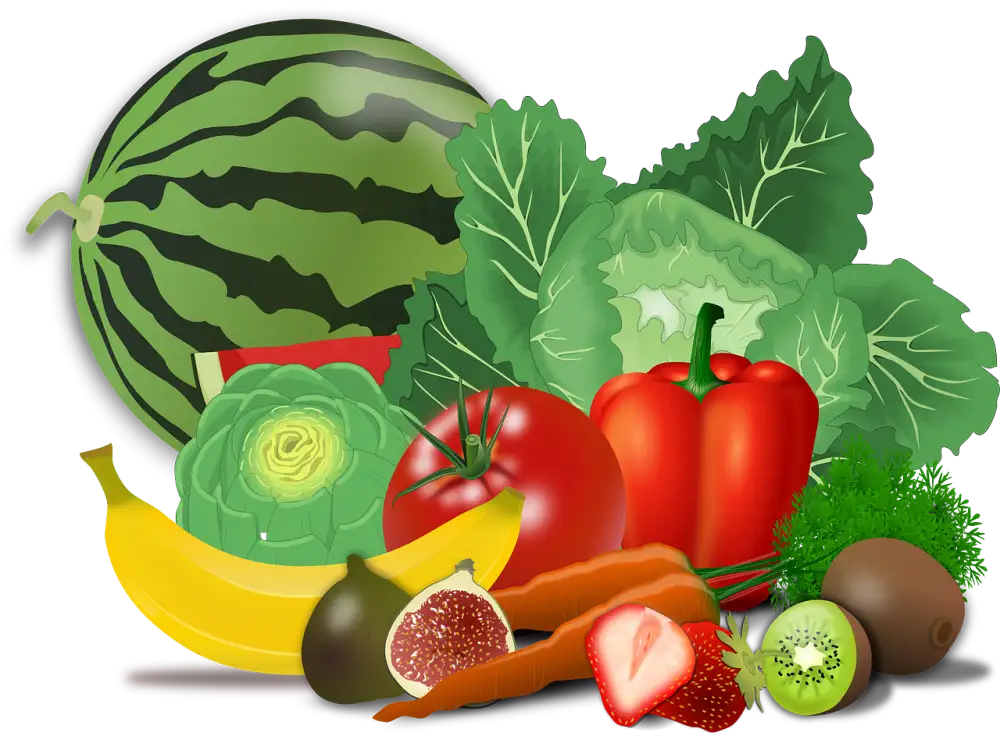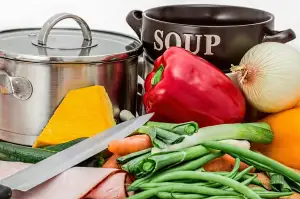Savor the Savory Delights: Uncover the Secrets of Making Stuffed Cabbage

- History and Origins of Stuffed Cabbage
- Traditional Ingredients for Stuffed Cabbage
- Step-by-Step Guide to Making Stuffed Cabbage
- 1. Preparing the Cabbage Leaves
- 2. Making the Filling
- 3. Stuffing and Rolling the Cabbage Leaves
- 4. Cooking Methods for Stuffed Cabbage
- Variations and Regional Adaptations of Stuffed Cabbage
- Serving Suggestions and Accompaniments for Stuffed Cabbage
- Health Benefits of Stuffed Cabbage
Stuffed cabbage, also known as cabbage rolls or golubtsi, is a delectable dish that has been enjoyed for centuries. This savory delight consists of tender cabbage leaves stuffed with a flavorful filling and cooked to perfection. Whether you're a fan of comfort food or looking to explore new culinary experiences, stuffed cabbage is sure to satisfy your taste buds. Join us as we uncover the secrets of making this timeless classic and savor the delightful flavors it has to offer.
History and Origins of Stuffed Cabbage
Stuffed cabbage, also known as cabbage rolls or golubtsi, has a rich history that dates back centuries. Its origins can be traced to various regions across the globe, including Eastern Europe, the Middle East, and Asia.
The exact origin of stuffed cabbage is difficult to pinpoint, as it has been adapted and modified by different cultures over time. However, it is believed to have originated in the Middle East and then spread to other parts of the world through trade routes.
In Eastern Europe, stuffed cabbage became a staple dish in countries like Poland, Hungary, and Ukraine. It was traditionally prepared during special occasions and celebrations such as weddings and holidays. The dish symbolized abundance and prosperity.
In the Middle East, stuffed cabbage was popular among Jewish communities and was often served during religious festivals such as Passover. It was considered a comfort food that brought families together.
Each region has its own unique take on stuffed cabbage. For example, in Eastern Europe, the filling typically consists of ground meat (such as pork or beef), rice or barley, onions, garlic, and spices like paprika or dill. In contrast, Middle Eastern versions may include ingredients like lamb or chicken along with fragrant spices such as cinnamon and allspice.
Over time, stuffed cabbage has evolved into a beloved dish worldwide. It has been adapted by different cultures to suit their culinary preferences while still retaining its essence – tender cabbage leaves enveloping a flavorful filling.
Today, stuffed cabbage continues to be enjoyed by people around the world for its comforting flavors and cultural significance. Whether you're savoring a traditional Eastern European version or trying a unique regional adaptation, this timeless dish is sure to delight your taste buds and transport you to culinary traditions of the past.
Traditional Ingredients for Stuffed Cabbage
The key to a delicious stuffed cabbage lies in the choice of ingredients. While there may be variations across different regions, some ingredients remain constant. The main ingredient, of course, is the cabbage itself. A large head of cabbage is typically used, with the outer leaves carefully separated and reserved for stuffing.
The filling for stuffed cabbage usually consists of a mixture of ground meat and rice. Ground beef or pork are commonly used, but some recipes call for a combination of both. The rice adds texture and helps bind the filling together.
To enhance the flavors, onions and garlic are often sautéed before being added to the filling. These aromatic vegetables add depth and richness to the dish. Other seasonings such as salt, pepper, and herbs like parsley or dill may also be included to further enhance the taste.
Some recipes may incorporate additional ingredients like diced tomatoes or tomato sauce into the filling mixture. This adds a tangy sweetness that complements the savory flavors.
Overall, the traditional ingredients for stuffed cabbage create a harmonious blend of flavors that result in a satisfying and comforting dish.
Step-by-Step Guide to Making Stuffed Cabbage
1. Start by preparing the cabbage leaves. Remove the outer layers and carefully separate them, ensuring they remain intact.
2. Blanch the cabbage leaves in boiling water for a few minutes until they become pliable. Then, transfer them to an ice bath to stop the cooking process.
3. Next, make the filling by combining ground meat (such as beef or pork), cooked rice, onions, garlic, herbs, and spices in a bowl. Mix well until all ingredients are evenly incorporated.
4. Take a cabbage leaf and place a spoonful of filling at the center. Fold the sides over the filling and roll it tightly into a neat package.
5. Repeat this process with the remaining cabbage leaves and filling until all are used up.
6. There are various cooking methods for stuffed cabbage. You can simmer them in a flavorful tomato-based sauce on the stovetop or bake them in the oven until tender and golden.
7. Whichever method you choose, make sure to cook your stuffed cabbage slowly over low heat to allow all the flavors to meld together.
8. Once cooked, remove from heat and let them rest for a few minutes before serving hot.
By following these simple steps, you can create delicious stuffed cabbage that is sure to impress your family and friends with its delightful flavors and textures
1. Preparing the Cabbage Leaves
4.1. Preparing the Cabbage Leaves
Before diving into the delightful process of making stuffed cabbage, it is essential to prepare the cabbage leaves properly. This step ensures that the leaves are pliable and easy to work with.
To begin, select a large head of cabbage and remove any damaged or wilted outer leaves. Gently wash the cabbage under cold running water to remove any dirt or debris.
Next, bring a large pot of water to a boil and carefully place the whole cabbage head into the boiling water. Allow it to cook for a few minutes until the outer leaves become tender and pliable.
Using tongs or a slotted spoon, carefully remove the cabbage from the pot and transfer it to a colander or plate to cool slightly. Once cool enough to handle, gently separate the softened outer leaves from the head.
If necessary, return the remaining head of cabbage to the boiling water for additional cooking time until all desired leaves are softened.
Trim off any tough ribs or thick stems from each leaf using a sharp knife. This will make rolling and stuffing easier while ensuring a more enjoyable eating experience.
Now that you have perfectly prepared cabbage leaves, you are ready to move on to creating the flavorful filling that will make your stuffed cabbage truly irresistible.
2. Making the Filling
The filling is the heart and soul of stuffed cabbage, adding a burst of flavor to every bite. The traditional filling typically consists of ground meat, such as beef or pork, mixed with rice, onions, garlic, and various herbs and spices. The combination of these ingredients creates a rich and savory filling that complements the tender cabbage leaves perfectly.
To make the filling, start by sautéing finely chopped onions and minced garlic in a pan until they become translucent and fragrant. Then add the ground meat and cook it until it browns. Next, mix in cooked rice along with herbs like parsley, dill, or thyme to enhance the taste profile.
Seasonings like salt, pepper, paprika, and Worcestershire sauce can be added to elevate the flavors even further. Make sure to adjust the seasonings according to your preference.
Once all the ingredients are well combined, set aside the filling mixture to cool slightly before using it to stuff the cabbage leaves. This step allows for easier handling and prevents any potential burning from hot fillings.
The process of making the filling is crucial as it sets the foundation for a delicious stuffed cabbage dish. Experimenting with different combinations of herbs and spices can help create unique variations that cater to individual tastes while still maintaining the essence of this classic dish.
3. Stuffing and Rolling the Cabbage Leaves
To stuff and roll the cabbage leaves, start by placing a spoonful of the filling mixture onto each cabbage leaf. Carefully fold the sides of the leaf over the filling, then roll it up tightly from the bottom to form a neat bundle. Secure with toothpicks or kitchen twine if necessary. Repeat this process until all the filling is used and all the cabbage leaves are stuffed and rolled. The stuffed cabbage rolls should be compact and well-sealed to prevent them from falling apart during cooking.
4. Cooking Methods for Stuffed Cabbage
Once the cabbage rolls are assembled, there are several cooking methods to choose from. The most common method is to simmer the stuffed cabbage rolls in a flavorful tomato sauce on the stovetop. This allows the flavors to meld together and the cabbage leaves to become tender.
Another popular cooking method is baking the stuffed cabbage rolls in the oven. This gives them a slightly crispy texture on the outside while keeping them moist and juicy on the inside.
For those looking for a quicker option, stuffed cabbage rolls can also be cooked in a pressure cooker or slow cooker. These methods reduce cooking time without compromising on taste.
No matter which cooking method you choose, it's important to ensure that the stuffed cabbage rolls are fully cooked before serving. This can be done by testing the internal temperature with a meat thermometer or by cutting into one roll to check if the filling is cooked through.
Experiment with different cooking methods to find your preferred way of preparing this delectable dish.
Variations and Regional Adaptations of Stuffed Cabbage
Stuffed cabbage has been embraced by various cultures around the world, each adding their own unique twist to this delectable dish. In Eastern Europe, the traditional version is known as "Golubtsi" in Russia, "Holubky" in Slovakia, and "Halupki" in Poland. These variations typically feature a filling made with ground meat, rice, and spices.
In the Middle East, stuffed cabbage takes on a different flavor profile with the addition of ingredients like cinnamon, allspice, and dried fruits such as raisins or dates. This version is often served with a tangy tomato sauce.
In Mediterranean countries like Greece and Turkey, stuffed cabbage leaves are filled with a mixture of rice, herbs like dill or mint, and sometimes minced lamb or beef. The rolls are then simmered in a lemon-infused broth for a refreshing twist.
Asian countries also have their own take on stuffed cabbage. In China, it is known as "Bai Cai Rou Yuan," where the filling consists of pork mixed with vegetables like mushrooms and bamboo shoots. The rolls are then steamed or braised in a savory sauce.
These regional adaptations showcase the versatility of stuffed cabbage and how it can be customized to suit different palates and culinary traditions. Whether you prefer it spicy or mild, vegetarian or meat-filled, there's a variation out there that will surely satisfy your taste buds.
Serving Suggestions and Accompaniments for Stuffed Cabbage
Stuffed cabbage is a versatile dish that can be enjoyed on its own or paired with various accompaniments. Here are some serving suggestions to enhance your stuffed cabbage experience.
1. Sauce: Serve stuffed cabbage with a tangy tomato sauce or a creamy mushroom sauce for added flavor and moisture.
2. Side dishes: Pair stuffed cabbage with traditional sides like mashed potatoes, roasted vegetables, or a fresh green salad for a well-rounded meal.
3. Bread: Enjoy stuffed cabbage with crusty bread or dinner rolls to soak up the delicious juices.
4. Pickles: Add some tanginess to your plate by serving stuffed cabbage with pickles, such as dill pickles or sauerkraut.
5. Garnish: Sprinkle freshly chopped parsley or dill over the stuffed cabbage for a pop of color and freshness.
Remember, these are just suggestions, so feel free to experiment and find your own perfect combination of flavors and accompaniments.
Health Benefits of Stuffed Cabbage
Stuffed cabbage not only satisfies your taste buds but also provides numerous health benefits. Firstly, cabbage is a low-calorie vegetable that is high in fiber, making it great for weight management and digestion. It is also packed with vitamins C and K, which boost the immune system and promote bone health.
Furthermore, the filling of stuffed cabbage often includes lean protein such as ground meat or beans, providing a good source of essential amino acids. This makes it a nutritious option for those looking to increase their protein intake.
Additionally, the combination of cabbage and other vegetables in the filling provides a variety of antioxidants and phytochemicals that have been linked to reducing the risk of chronic diseases such as heart disease and certain types of cancer.
Lastly, stuffed cabbage is typically cooked with tomato-based sauces, which are rich in lycopene. Lycopene has been associated with reducing inflammation and protecting against certain cancers.
In conclusion, indulging in stuffed cabbage not only offers a delightful culinary experience but also contributes to a healthy lifestyle by providing essential nutrients and potential disease-fighting properties.
In conclusion, stuffed cabbage is a dish that has stood the test of time and continues to delight taste buds around the world. Its rich history and diverse regional adaptations make it a truly fascinating culinary treasure.
Whether you prefer the traditional ingredients or want to experiment with your own variations, making stuffed cabbage is a rewarding experience. The combination of tender cabbage leaves and flavorful fillings creates a mouthwatering dish that is sure to impress.
So, why not give stuffed cabbage a try? Follow our step-by-step guide and uncover the secrets of this delectable dish. Whether you enjoy it as a main course or as part of a larger meal, the savory flavors and comforting textures are sure to satisfy.
So go ahead, savor the delightful flavors of stuffed cabbage and embark on a culinary journey that will leave you craving more.
Published: 18. 11. 2023
Category: Food



